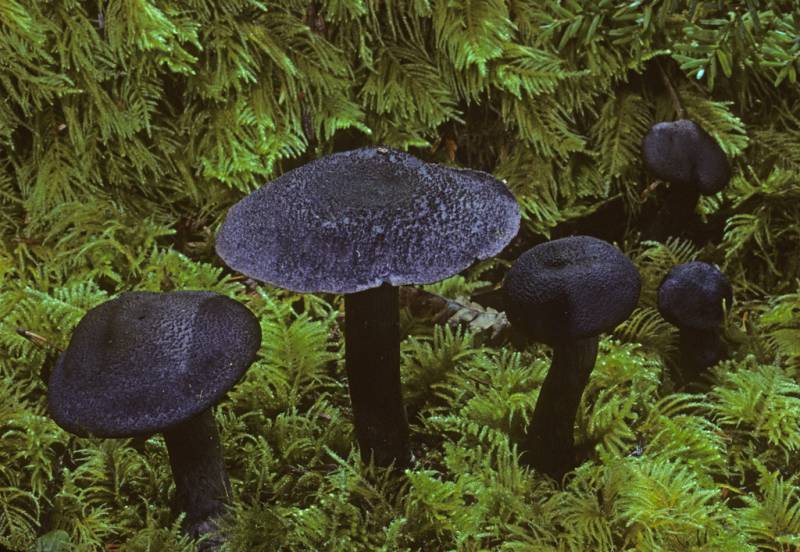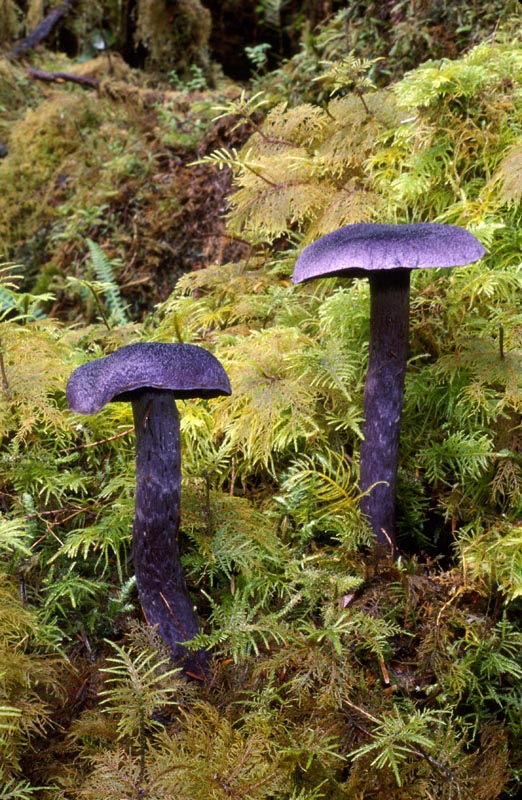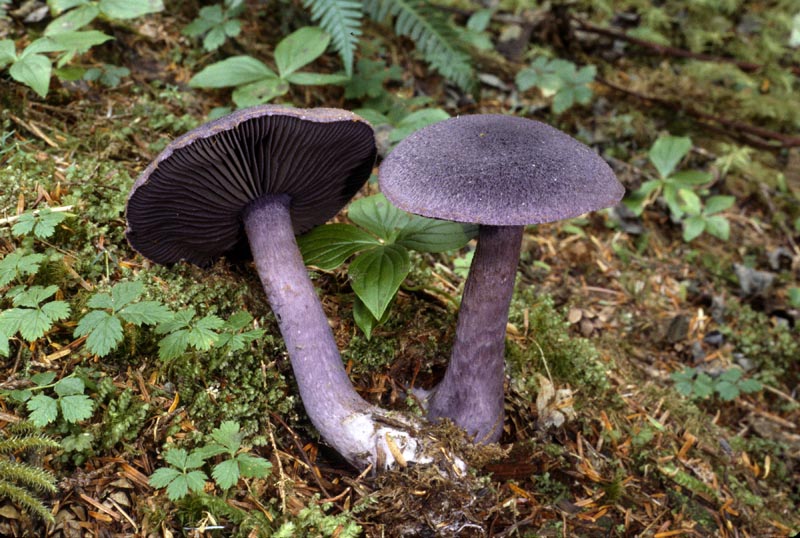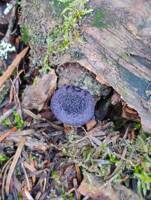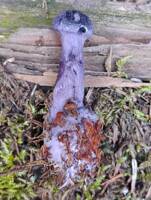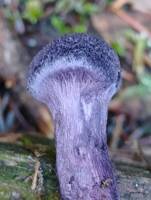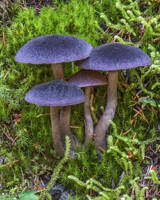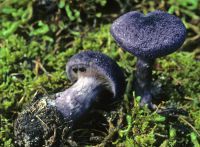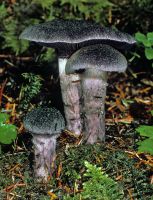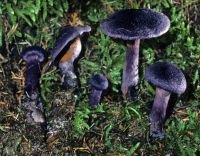Distribution: In some years it is difficult to find but in general it is commonly encountered, but usually in small numbers.
Habitat: Widespread in older forests in PNW region, but much less common in the interior mountains than nearer the coast.
Conservation Status: Not of concern
Cortinarius violaceus is perhaps the most distinctive species in the genus. It has a dark violet, dry, scaly to tomentose cap with a somewhat metallic sheen. The close gills are deep violet and the stipe is typically broadly club-shaped, dry and violet, with a bluish color on the base at times, and a veil that appears somewhat grayish. The flesh is violet with white mottling and the odor is distinctly of cedar wood. Often the stipe base darkens when handled. In Europe, two very similar species are recognized, C. violaceus in hardwood forests and C. hercynicus (Persoon) Brandrud in conifer forests. The latter has almond-shaped to ellipsoid spores that are narrower than those of the former. The form occurring in western North America may well represent a separate species, but that is yet to be determined.
PNW Herbaria: Specimen records of Cortinarius violaceus in the Consortium of Pacific Northwest Herbaria database
CalPhotos: Cortinarius violaceus photos

